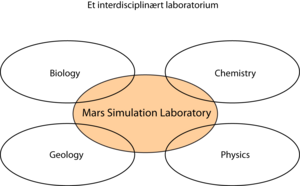The Mars Simulation Laboratory is organized as an interdisciplinary collaboration around joint research on Martian surface conditions. Our joint research combines detailed experimental studies with modelling. It is our ambition to obtain new insights in factors that define present and past environmental conditions and processes at the surface of Mars. Thus, we aspire to understand how these processes and conditions affect Martian surface physics and chemistry as well as their relevance for tracing life. This is necessary to interpret the results of past present and future missions to the red planet.
Staff members participating at present are:
The research combines detailed experimental studies with modelling. It is our ambition to obtain new insights in factors that define present and past environmental conditions and processes at the surface of Mars. Thus, we aspire to understand how these processes and conditions affect Martian surface physics and chemistry as well as their relevance for tracing life. This is necessary to interpret the results of past present and future missions to the red planet.
The group members have developed several instruments to simulate wind-driven erosion leading to abrasion of mineral grains by saltation. We also built a chamber to carry out biological experiments under simulated Martian conditions including UV radiation, temperature and pressure.
In connection with research projects, the group also have developed wind and dust sensing instruments.
The close collaboration is managed during weekly one-hour meetings with minutes.
At Aarhus University we also have access to one bar and low pressure wind tunnels. Read more about the windtunnels at the Planetology Laboratory website or contact Jonathan P. Merrison, Institute for Physics and Astronomy.
